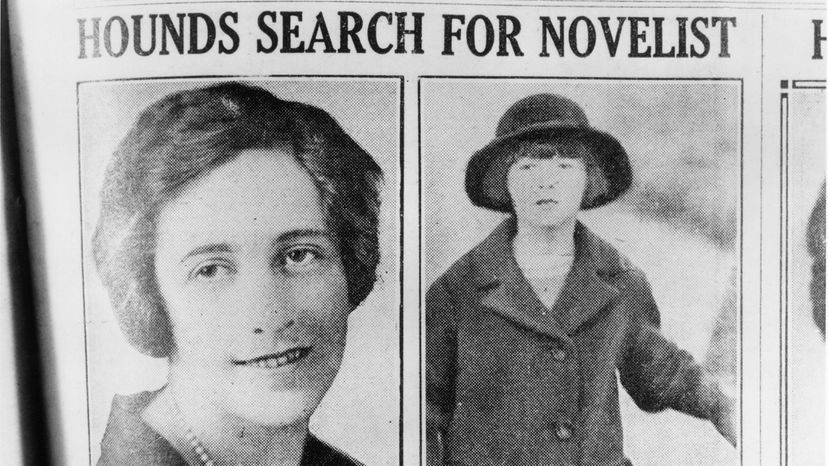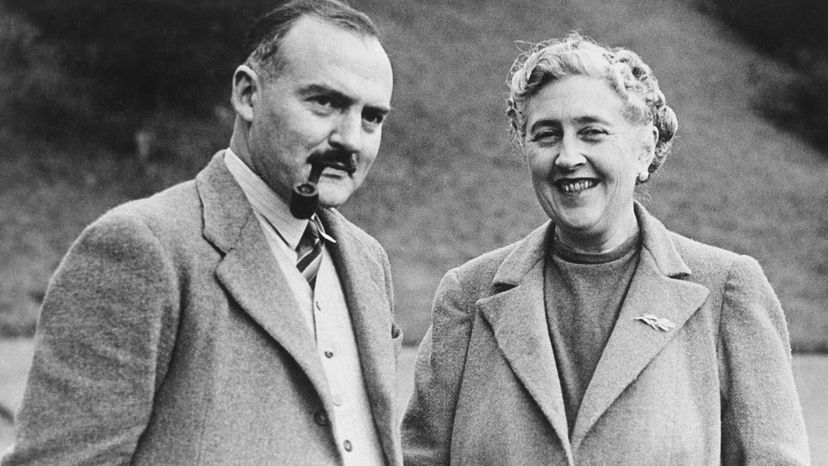
In the spring of 1926, Agatha’s beloved mother died, leaving her devastated. To make matters worse, Archie (who had earlier told her he didn’t like to deal with illness or death) promptly went to London instead of helping his wife to clear out her mother’s home in Torquay. Agatha became depressed, and in subsequent weeks appeared to be on the verge of a mental health crisis. Meanwhile, Archie began an affair with Nancy Neele, a family friend, approaching Agatha for a divorce that August; Agatha refused to grant him one. The Christies tried to reconcile but on Dec. 3, they had an argument and Archie left home for the weekend. That’s when everything went awry.
Sometime that evening, Agatha left a sleeping Rosalind in the care of house staff, then drove off into the night. The next morning, her abandoned car was discovered stuck in some bushes above a chalk quarry. The police immediately began to search for her, joined by thousands of ordinary people after a flurry of publicity about the case. Rumors began to swirl that she had drowned herself, or that Archie had killed her. Another possibility: She was hiding in order to frame Archie for her murder.
Eleven days after her disappearance, Agatha was found alive at the Harrogate Spa Hotel, curiously registered as Teresa Neele, previously of South Africa. Neele, of course, was the surname of Archie’s mistress, while South Africa was a locale where Agatha and Archie had spent happy times. When Archie came to retrieve her, she didn’t know who he was.
So, what was the real reason for the disappearance? In the one interview she gave on the subject, Agatha said she’d lost her memory — coincidentally, something that occasionally happened to characters in her novels. After psychotherapy, she was able to recreate a narrative of what had happened. Christie said she had left home that night despondent and contemplating suicide. After aimlessly driving around the countryside, she accidentally crashed her car near the chalk quarry, causing her head to strike something.
After getting out of the car, she made it to a train station, where she traveled to Harrogate. She did not disguise herself in any way, nor hide her handwriting when she registered as Teresa Neele. She dined in the hotel restaurant, took part in the evening dancing and didn’t appear to notice the newspaper articles about her disappearance and the ensuing manhunt.
But many people (including later biographers) didn’t believe she was suffering from memory loss, speculating that she deliberately engineered her disappearance. However, Lucy Worsley, a historian and author of the new biography “Agatha Christie: An English Mystery,” asserts that this was no scam, but a serious mental health episode.
In an interview published in the BBC’s HistoryExtra, Worsley said she believes Agatha entered a fugue state. “Now, this is a very rare condition, and it causes you to step right outside your normal self and adopt another persona, so that you don’t have to think about the trauma you’ve been experiencing in your current situation,” she said. “That’s not framing your cheating husband for murder — that is living with a really serious mental-health condition. And yet the narrative is that she was somehow a bad person who was playing some sort of a trick on the world: perhaps she was doing it to frame the husband; perhaps she was doing it to get attention to sell novels.”
